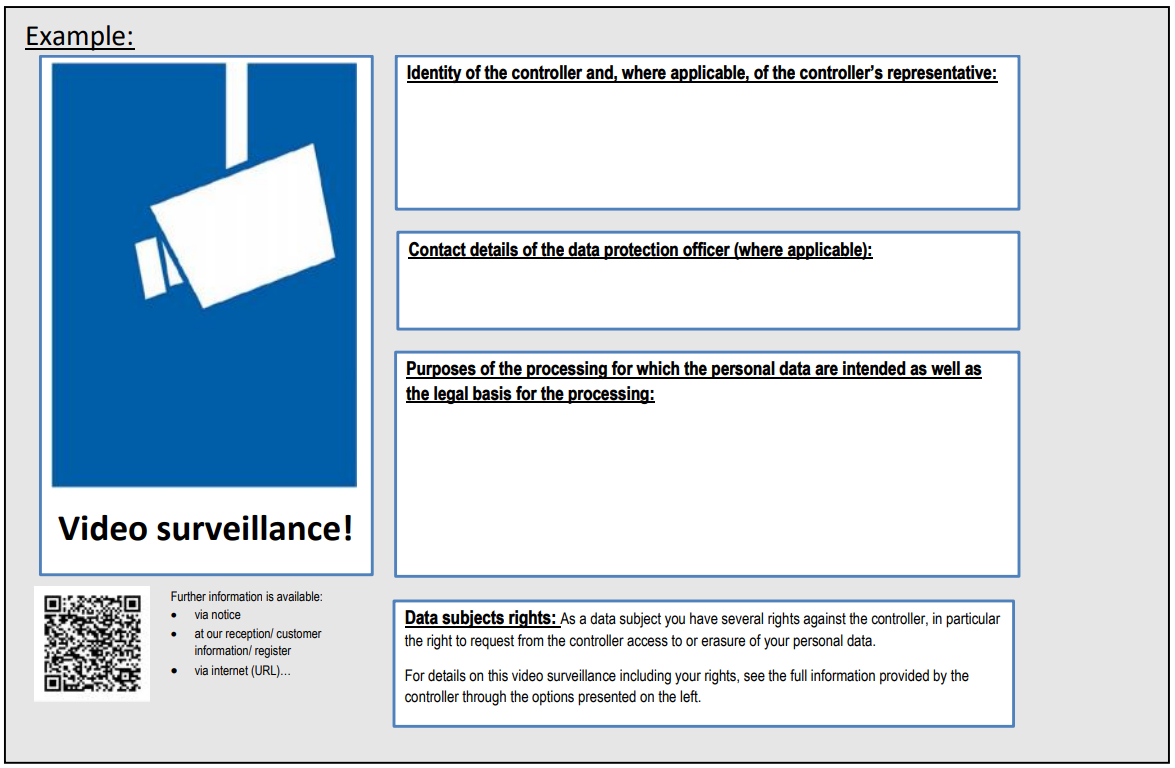The Precise Art of Videosurveillance
Some words of explanation from our Legal Counsels
EL.MO. S.p.a., has been operating in the Video Surveillance sector for over twenty years, boasting Partners of primary importance, both on a National and International level. In the perspective of favoring clients who decides to equip themself with a CCTV system, EL.MO. offers insights aimed at providing some indications, both regulatory and operational, to the interested parties.
The definition of Video Surveillance
The term video surveillance stands for the continuous acquisition of images, possibly associated with sounds, relating to identifiable people, which could also imply the simultaneous recording and/or subsequent storage of the detected data.
Having learned from this, it is clear that the activity in question must be fully regulated in order to prevent the filmed subject from being exposed to any privacy right violations.
The intervention of the Guarantor for the protection of personal data on the subject of Video Surveillance
In this regard, in recent weeks there has been a lot of discussion among the sectors' technicians regarding the publication by the Guarantor for the Protection of Personal Data on December 5th 2020 of some Frequently Asked Questions on the subject of video surveillance. These FAQs have the express aim to support the operators of this sector for the compliance in matter of protections imposed on the subject by the GDPR.
In this regard, it is important to point out that the Guarantor has not substantially innovated the regulations already in force, that followed the issue of the previous 2010 Measures as well as the most recent 3/2019 Guidelines. In fact, these regulations already issued the processing of personal data through video surveillance, being adopted by the European Data Protection Board (so-called EDPB) in the plenary assembly of July 10th 2019. The Guarantor limited itself to clarifying some fundamental points of the regulations.
As a premise, it should be noted that the 3/2019 Guidelines, proposed again in full by the Guarantor, already state that the GDPR does not apply in the case of video footage relating to unrecognizable subjects, either directly or indirectly. For the effect, it is natural that the protections of the aforementioned European Regulation do not apply in the event that fake cameras are installed or not connected to any system or the so-called Park Assist systems, designed to perform only the function of reading the number plates of entering and exiting cars.
Questions and answers:
a) What must be evaluated before proceeding with the installation of a Video Surveillance system?
In this regard, the Authority responsible for the protection of privacy reiterated the considerations already set out by the EDPB in 2019, specifying that "the video surveillance activity must be carried out in compliance with the so-called data minimization principle regarding the choice of video shooting methods, dislocation and management of the various stages of the treatment".
In other words, the Guarantor has recommended to those who intend to install a video shooting system to only acquire the images deemed essential to the pursuit of the purposes for which the system is intended, typically aimed to ensure the safety of the customer and of their assets. This implies that the video surveillance system cannot be used, not even indirectly, for purposes other than the legitimate ones for which it has been installed (for example to collect information on the neighborhood, on the activity carried out by employees, on the production activity carried out by a neighboring competitor, and the like).
More detailed information on the application of the GDPR Regulation on video surveillance is contained in the aforementioned Guidelines, published on July 10th 2019 by the EDPB.
b) Is it necessary to have an authorization from the Guarantor to install the video surveillance system?
The Guarantor reassures the operators of the sector: except in the case in which the installation takes place at a workplace (the regulations of which will be discussed below), it is not necessary to request any authorization from the Guarantor to proceed with the installation of cameras.
In accordance with the regulations in force to date, however, the owner of the treatment must proceed with caution, positioning the cameras so that there is the least possible intrusion into the privacy of the individual, balancing the protection needs of its own assets and security (which require the use of the system) with the rights and freedoms of the subjects filmed.
c) In which way third-parties passing through the video surveillance area must be informed of the presence of cameras?
The Guarantor reaffirms, in accordance with the provisions of its General Measures issued on April 8th 2010, the obligation - also for the Public Administration and even on the occasion of the organization of public events - to inform the subjects concerned by the treatment (i.e. all subjects who are about to access and transit in the video surveillance area) of their imminent submission to the video surveillance treatment.
This information must be prepared both in extended form, pursuant to art. 13 of the GDPR - which can be exhibited at the request of the filmed subject - and also in simplified form, using the appropriate signs prepared by the EDPB and published by the Guarantor. The simplified model is shown below, which must contain, among the others, also useful information on how and where to find the text in its full version:

The "Video Surveillance Area" sign must be placed before the range of action of the camera - even in the immediate vicinity of the same - at a reasonable distance from the monitored places and so that, also in consideration of the chosen format, it can be viewed in all conditions of ambient lighting, and therefore also during the night.
In any case, it is not necessary to specify the precise location of the camera, as the interested party must only be able to guess which area is affected by the detection.